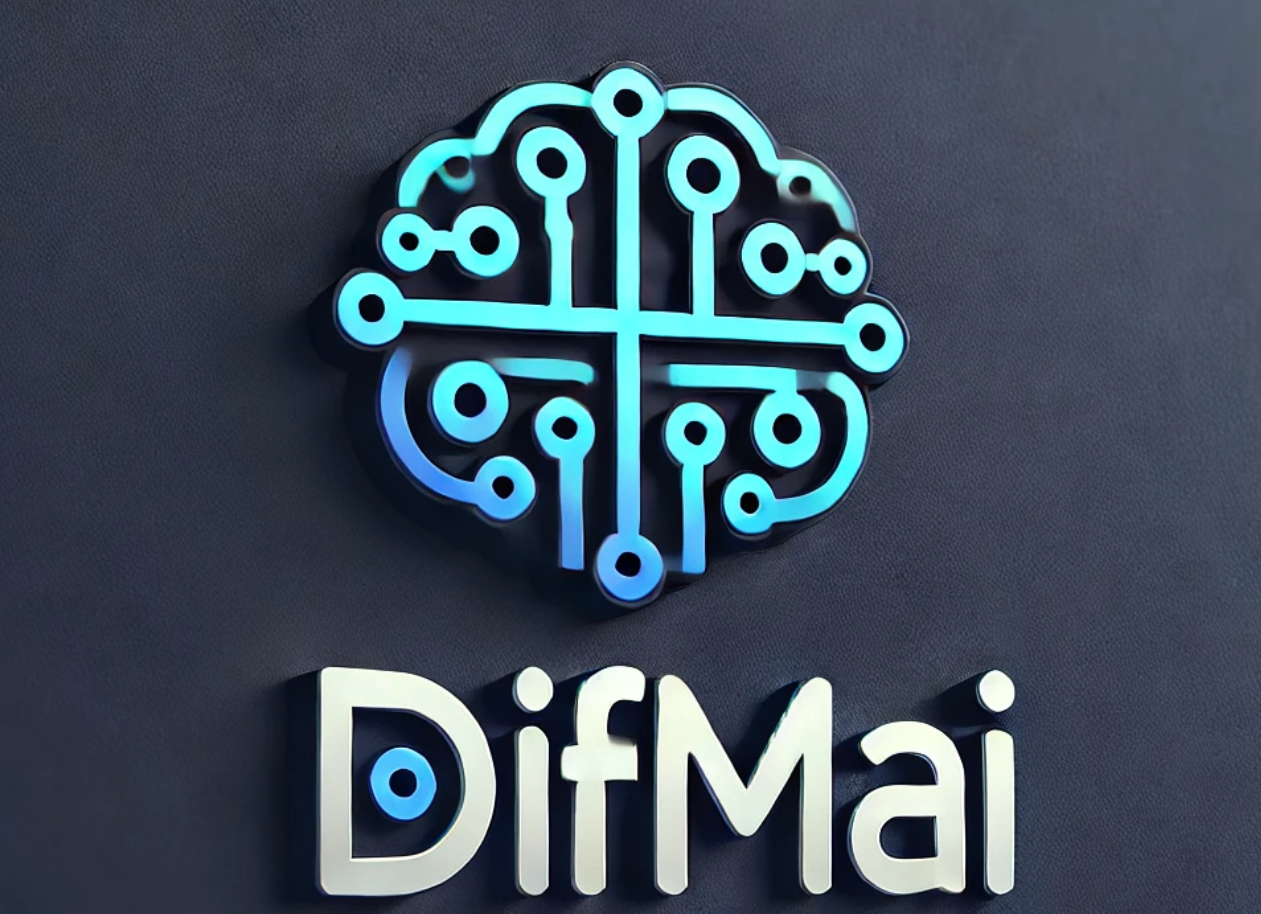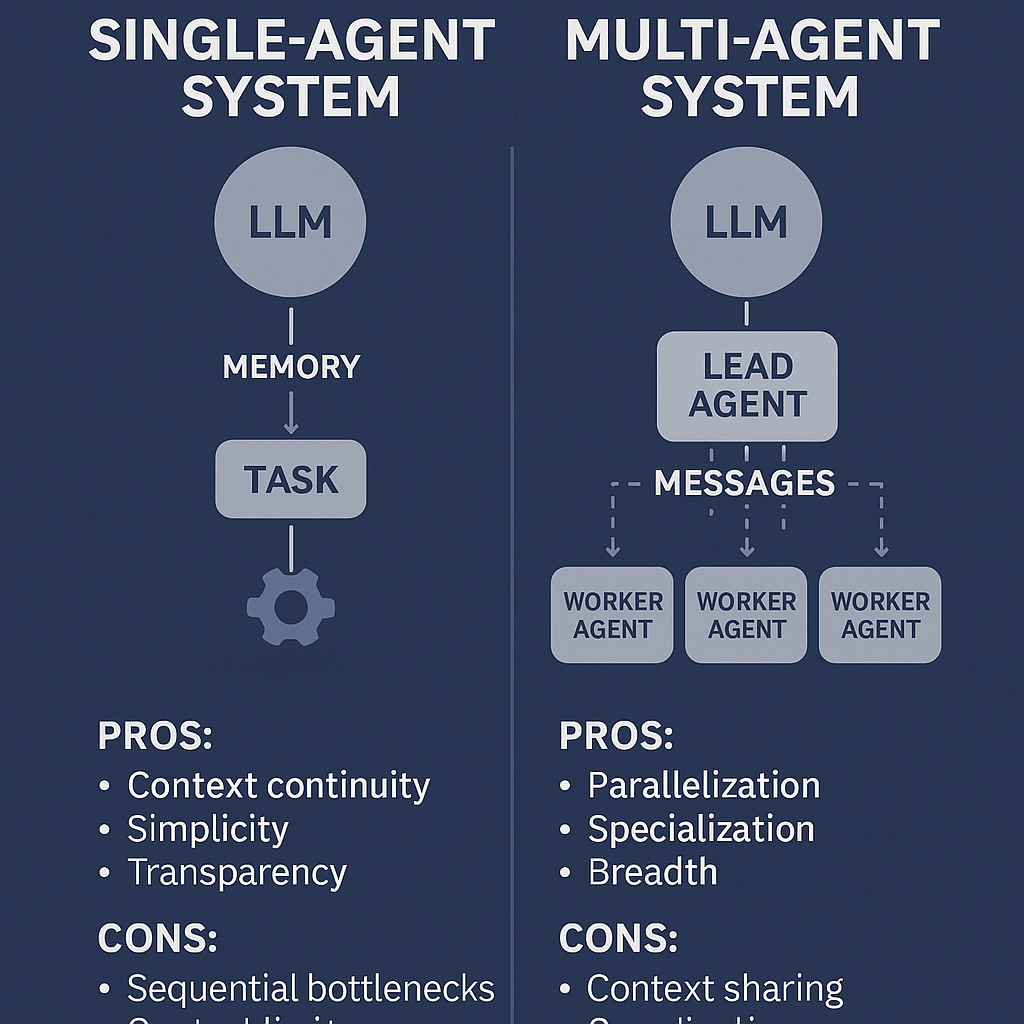TL;DR: Single-agent systems are stable, context-aware, and easy to debug—but limited in scale. Multi-agent systems are powerful and parallel—but carry the risk of chaotic behavior, inflated costs, and coordination nightmares. The smartest teams architect with intent—because overengineering now may backfire later.
What Is an AI Agent?
An AI agent uses a Large Language Model (LLM) to make decisions, trigger actions, and guide application workflows. It’s like hiring a smart intern who learns on the fly—except it never sleeps and runs on tokens.
Single-Agent Systems: Calm, Focused, and Consistent
Think of single-agent systems as lone wolves. They operate end-to-end with continuity, where each action builds on everything that came before. This makes them easier to manage—but at a cost to speed and scalability.
- Sequential: Steps follow one another logically, no overlap.
- Unified Context: Full memory access across all steps.
- Stateful: Every decision carries the weight of history.
✔ Pros:
- Context-rich and logically consistent
- Simple to debug and test
- Low risk of unpredictable behavior
✘ Cons:
- Slow due to sequential processing
- Can hit context window limits
- Wastes tokens on repeated context
Multi-Agent Systems: Powerful—but Potentially Unruly
Multi-agent systems act like startup teams: a lead agent breaks up a job and hands it to worker agents. It’s fast and scalable—but coordination issues, duplicated effort, and ballooning costs lurk in the shadows.
- Parallel Execution: Many agents work at once.
- Delegation: A lead agent orchestrates task breakdowns.
- Fragmented Context: Each agent only sees part of the puzzle.
✔ Pros:
- Massive speed improvements via parallelism
- Task specialization improves performance
- Capable of handling wide, exploratory problems
✘ Cons:
- Context fragmentation makes coordination tricky
- Costs can spike (up to 15x token usage)
- Failures are harder to debug—sometimes non-deterministic
⚠ Note: Peer-based swarm models (no lead agent) are also emerging—but bring hybrid issues: they preserve context better, yet suffer from unclear control logic.
Side-by-Side Comparison
| Aspect | Single-Agent | Multi-Agent |
|---|---|---|
| Context Handling | Unified & continuous | Distributed & fragmented |
| Execution Model | Sequential | Parallel |
| Token Usage | ~4x chat tokens | ~15x chat tokens |
| Reliability | High | Medium to low |
| Debugging | Simple | Complex |
| Best For | Writing, editing, coding | Research, exploration |
| Coordination Need | Low | High |
| Example Task | Refactor codebase | Market analysis |
| Key Strength | Reliability & memory | Scalability & speed |
| Main Risk | Slow, context limits | Chaos, token bloat |
The Truth About Building Agentic Systems
Despite the debates, smart builders on both sides agree: the magic lies in how you handle context and orchestrate the flow of control—not in how many agents you deploy.
- Context Engineering is Critical: It’s not just about prompts—it’s about designing systems that surface the right knowledge at the right time.
- “Read” vs “Write” Tasks: Research and discovery benefit from multi-agents. Writing and editing? Stick to single-agent models.
- Mixed Tasks Need Hybrid Designs: Use multi-agents for research, then hand off to a single-agent for coherent generation.
- Reliable Agents Need Real Infrastructure: Observability, recovery mechanisms, and evaluation metrics matter—especially when things go sideways.
- Model Capabilities Are Evolving Fast: Don’t lock yourself into a complex system today that a single GPT-6 agent might handle in 3 months.
Final Thought: Don’t Be Seduced by Scale
Multi-agent systems can look impressive, but without careful design, they become expensive, brittle, and hard to control. Single-agent systems are often underestimated but offer deep consistency and reliability. Before choosing your architecture, ask yourself: Is this a job for speed—or for trust?



